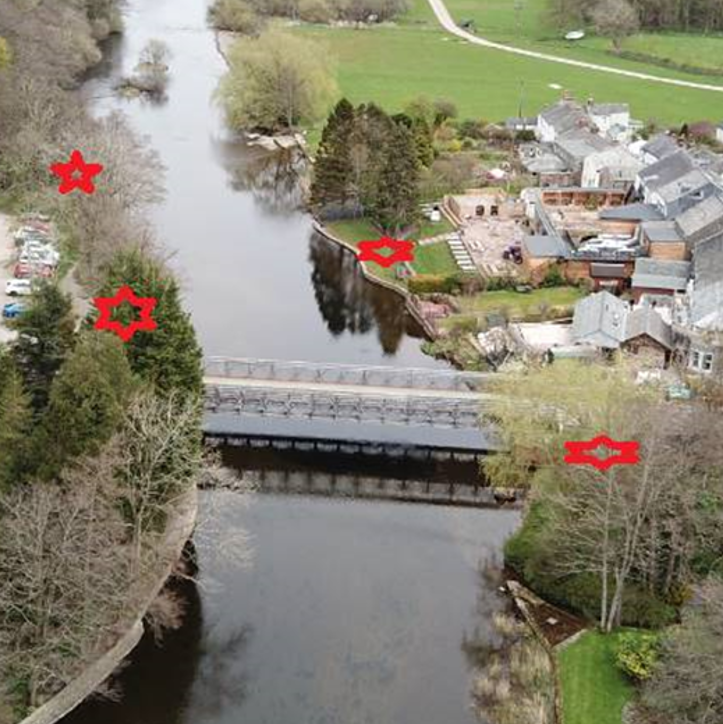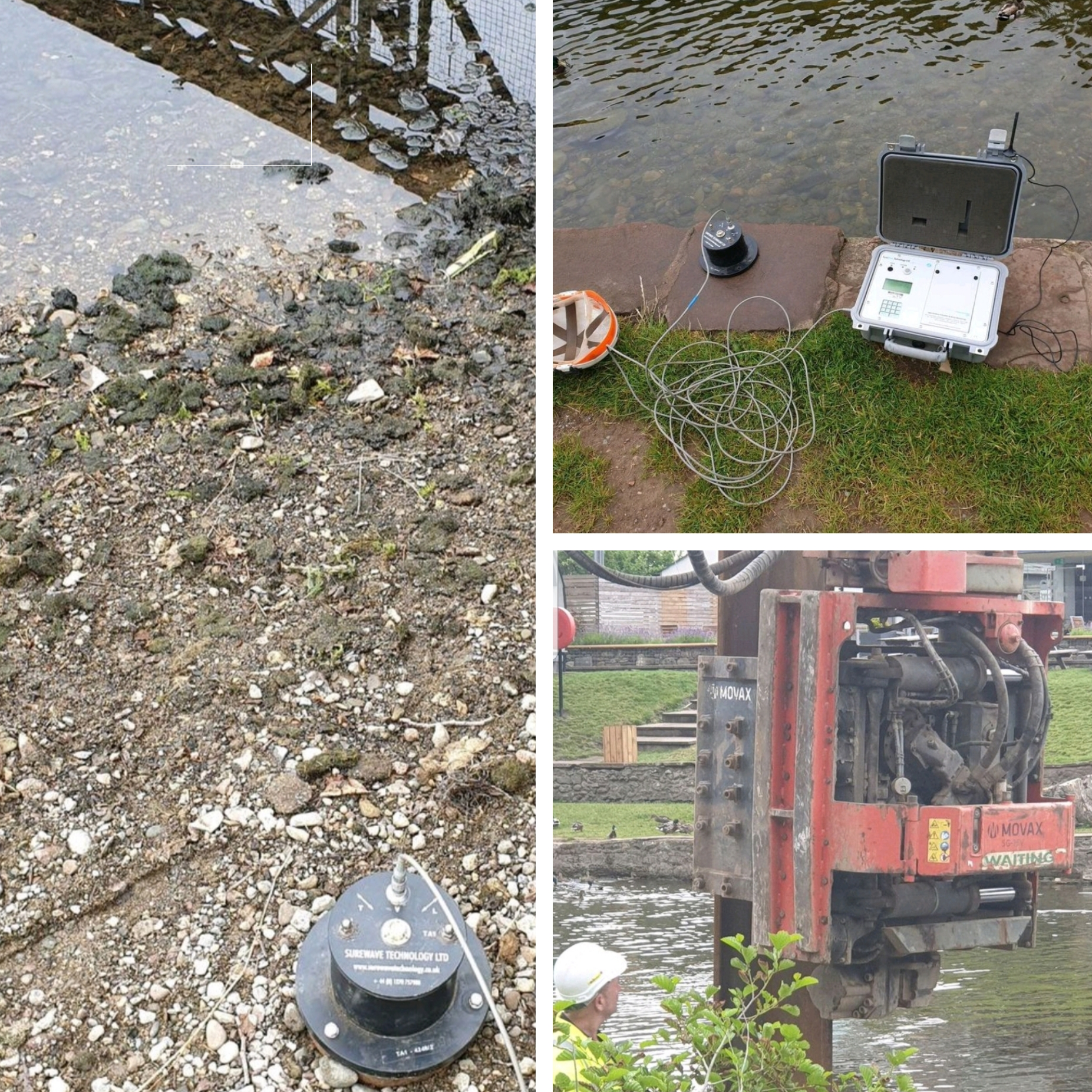Monitoring Requirements
SureWave Technology were approached to attend the trial installation of sheet piles in the River Eamont at Pooley Bridge in the Eden District and monitor the vibration levels to assess the effect on the local river ecology in case the permanent installation which was due three months after caused excessive vibration of nearby property or to the ecology within the river system.
This £5m project, designed by Knight Architects, in collaboration with contractor Eric Wright Civil Engineering, is expected to span 2.5 years to complete.
A temporary bridge has been in place ever since the original 18th-centrury stone arch bridge collapsed after Storm Desmond in 2015.
The team was to provide full vibration monitoring services for the duration for the trial installation which was expected to be between half a day and a full day’s work.
Consultancy Services
A SureWave engineer was deployed to the site to carry out all vibration monitoring in the agreed locations as shown in the site image below.
Risk assesments identified potential safety issues such as falling into the water and injuries from tripping, slipping etc. These risks were controlled by correct PPE being worn (e.g. hard hats, safety boots and high visibility jackets) and also not allowing work to occur within the water’s flow.
Our SureWave consultants met the approval as certified noise and vibration competent persons as required by the ISO standards.
The vibration levels were to be monitored in several different locations, and the engineer was to record levels at only one location at a time. In each location, they were to take a reading when Eric Wright vibrated the piles and also when they impact drove the piles.
A sensor mounting spike was also used to get a vibration reading from just within the water’s edge. The pictures below show the monitoring locations where vibration was recorded:



